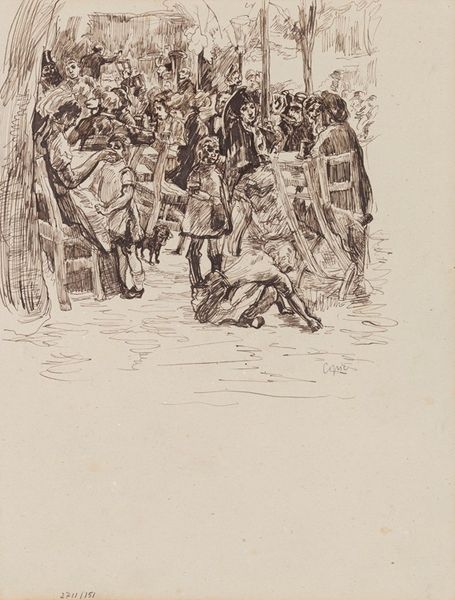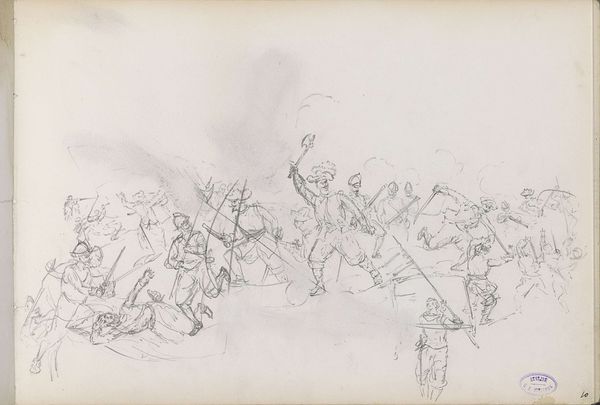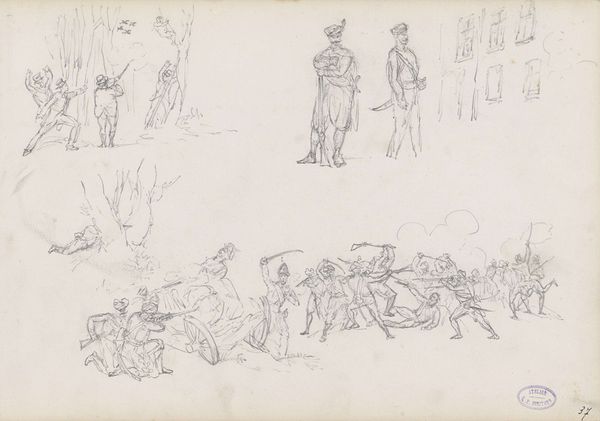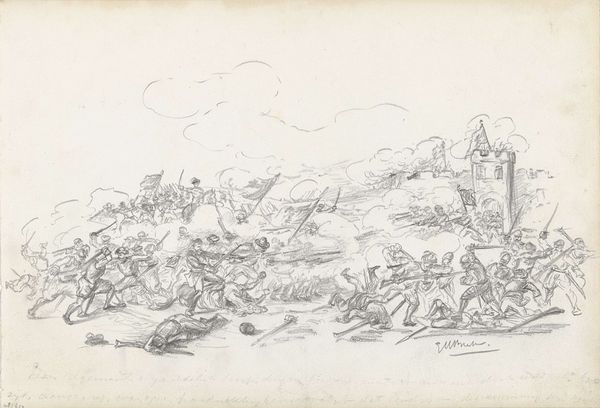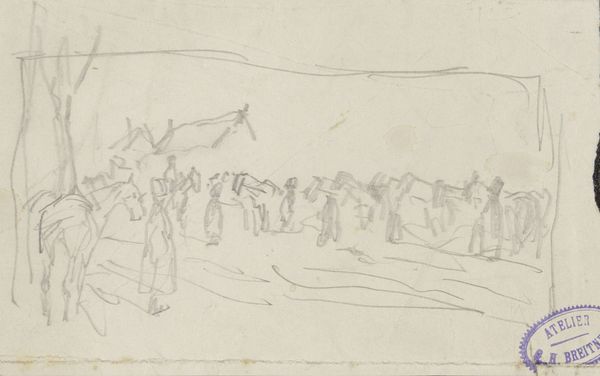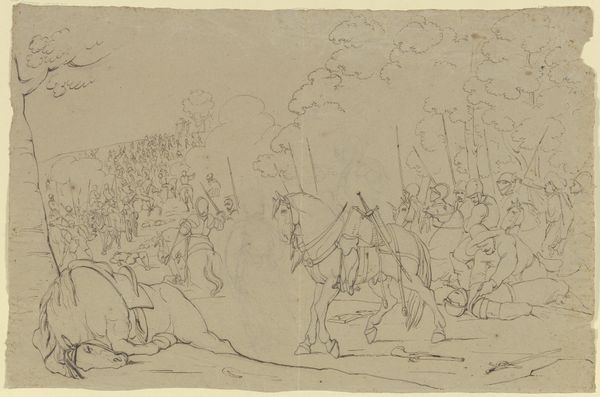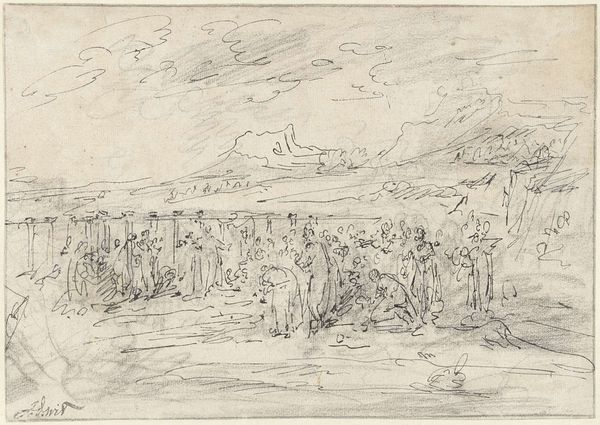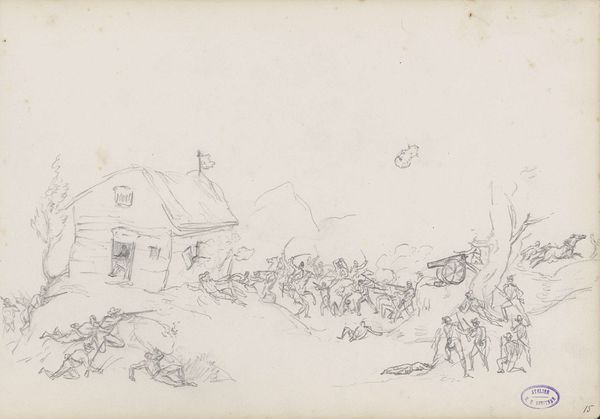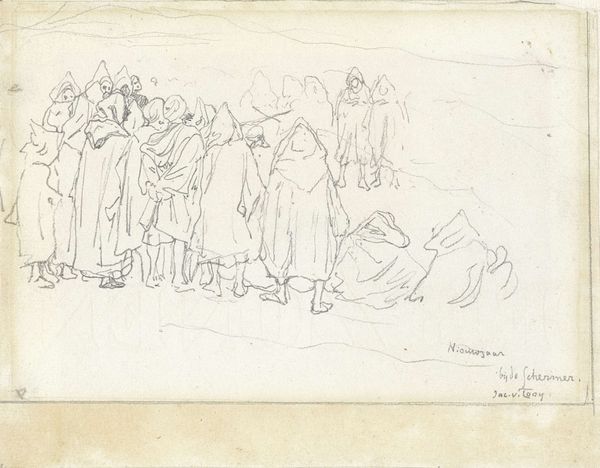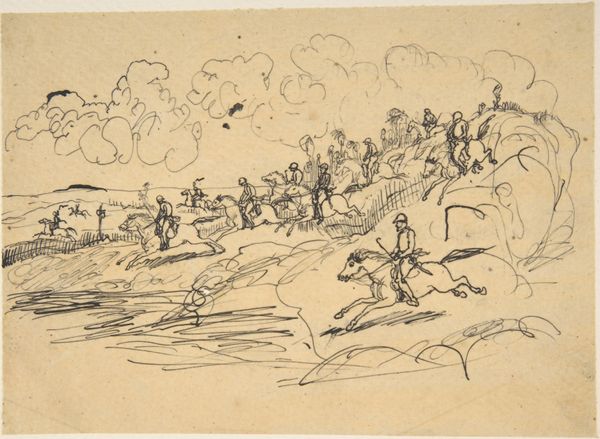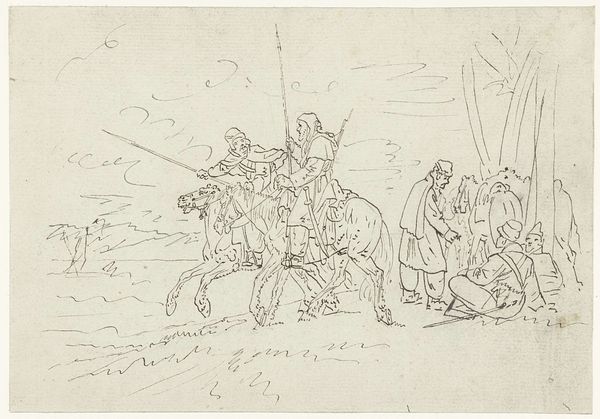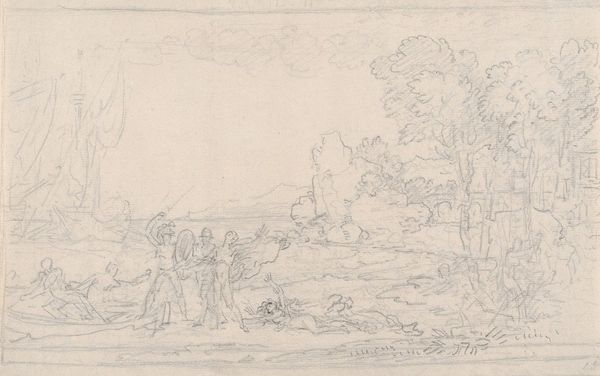
drawing, ink
#
drawing
#
landscape
#
figuration
#
ink
#
romanticism
#
genre-painting
Dimensions: height 195 mm, width 265 mm
Copyright: Rijks Museum: Open Domain
Curator: Before us, we have "Cossacks in an Ambush," a drawing made with ink, dating from around 1783-1850. Editor: It feels unfinished, almost like a fleeting sketch. I am struck by the starkness of the landscape, achieved through these minimalist lines. It almost appears desolate, setting an anxious atmosphere. Curator: I think your reading is quite astute. There is indeed a pervading tension. Looking at the composition, we have this central cluster of figures. Note the careful hatching that suggests depth, and see how the artist manipulates line weight to bring certain Cossacks into greater relief, establishing a spatial hierarchy. Editor: Do you think this image glorifies Cossack aggression? It does feel like a visual construction steeped in a specific socio-political moment of its time, likely meant to instill patriotism through valorizing the military and its strategy. Curator: Certainly, these depictions were designed for circulation. Genre paintings frequently depict everyday life, but, in that light, even simple drawings are not exempt from representing underlying political values. There's the crouching soldier, clearly scanning the scene for approaching threats while some members of the troop prepare their mounts, for example. It's a frozen moment of strategic action. Editor: And the sparse, barren trees seem to underscore their precarious position. These trees give it an eerie, ethereal touch as if nature itself is holding its breath with them. This all creates that anxiety that you previously mentioned, especially knowing an ambush could come at any moment. The scene really emphasizes this expectation of imminent conflict. Curator: I agree; those stark lines aren't just economical, but they convey a potent mood of nervous anticipation. Thank you, those perspectives enhance our understanding and appreciation of the piece. Editor: Of course, looking at it formally and within its possible historical contexts shows that something seemingly so minimal actually is very evocative of particular social and military concerns.
Comments
No comments
Be the first to comment and join the conversation on the ultimate creative platform.
